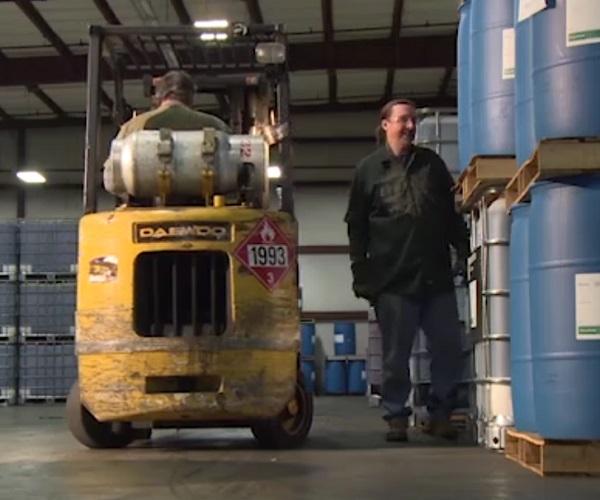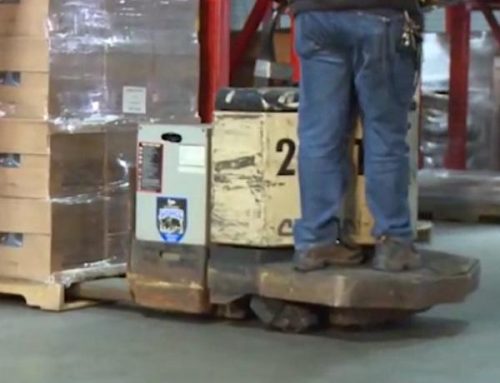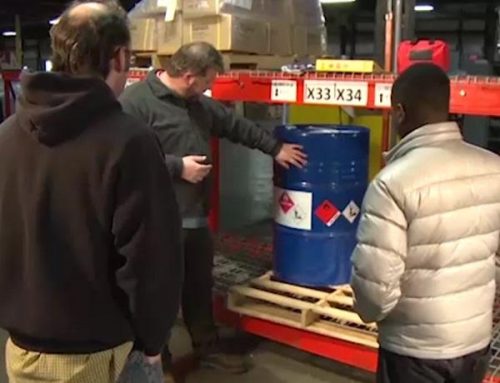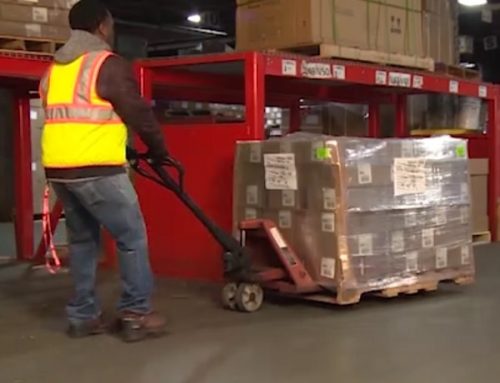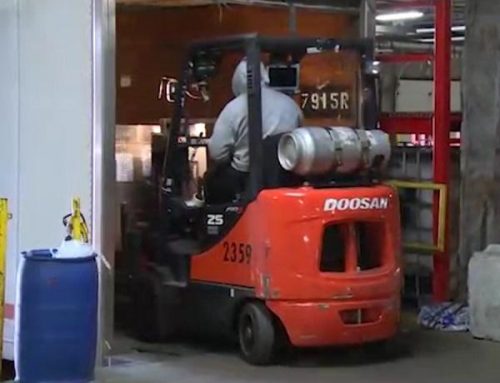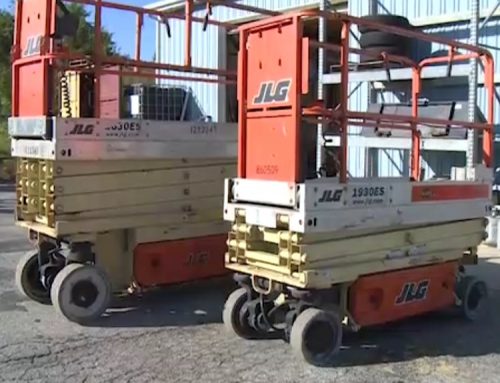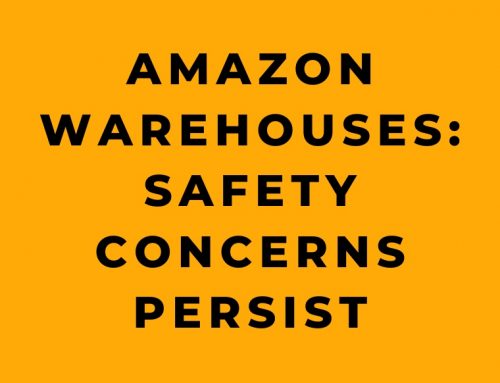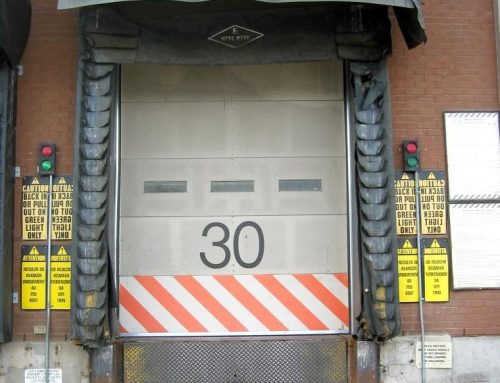Warehouses play a critical role in our economy by serving as hubs for the transportation, storage and distribution of all types of materials. As the backbone of commerce, they help keep businesses and industries running strong. However, the fast pace and demanding operations of warehouses also make them potentially hazardous workplaces.
This article outlines the top warehouse safety tips extracted from an online workplace safety training course. Following these tips can help warehouse workers stay injury-free and avoid the thousands of accidents that occur in warehouses every year.
The Dangers of Warehouse Work
While often overlooked, warehouses can be one of the most dangerous places to work. Each year, thousands of warehouse workers suffer work-related injuries. There are also more on-the-job fatalities in warehouses than in most other workplaces.
Common causes of warehouse accidents include:
- Forklift accidents – Collisions with pedestrians or falling loads are common.
- Slips, trips and falls – Clutter and spills create hazards.
- Improper lifting and materials handling – Back injuries are very common.
- Loading dock accidents – Falls from docks or impacts occur frequently.
- Collapsing storage – Improper stacking/storage of materials is risky.
- Hazardous materials – Chemicals and other dangerous substances.
Ignoring these risks or failing to take proper precautions can easily lead to serious injury or death. However, by adopting essential warehouse safety practices, it’s possible to avoid becoming another statistic.
How to Develop a Safety Mindset
The first key to warehouse safety is cultivating a proper “safety mindset”. This means taking workplace hazards seriously, rather than ignoring risks or assuming accidents only happen to others.
When you’re safety minded, you make smart decisions to protect yourself proactively, rather than reacting after it’s too late. It becomes second nature to take steps to minimize any dangers you encounter on the job.
Some ways to develop a safety mindset include:
- Attending all required safety training sessions.
- Reading and following safety rules, signs and warnings.
- Identifying hazards before starting any task.
- Only using equipment you’ve been trained on properly.
- Never hesitating to ask questions or report concerns.
- Setting an example by working carefully at all times.
Making workplace safety a priority begins with the right mindset. But you also need to put that mindset into practice.
Dress for Safety with Proper PPE
An easy first step to take in any warehouse is dressing for safety by wearing the required personal protective equipment (PPE).
PPE refers to any gear worn by workers to prevent or reduce injuries. Common PPE used in warehouses includes:
- Safety glasses – Protect the eyes from impacts, dust and chemical splashes.
- Work gloves – Leather gloves prevent cuts when handling materials.
- Steel-toe boots – Reinforced toes prevent crushing injuries to the feet.
- Hard hats – Help protect the head from falling objects and impacts.
- Hearing protection – Earmuffs or plugs prevent gradual hearing loss.
- Dust masks – Important when working around dusts or chemicals that can be inhaled.
PPE only works when you actually wear it and wear it correctly. Always inspect PPE before use to check for defects or damage. Promptly replace any faulty equipment.
Stay Focused and Avoid Rushing
Warehouses tend to be fast-paced environments focused on productivity. While important, productivity should never come at the expense of safety.
When you feel rushed or are busy with demanding tasks, it’s vital to stay focused and avoid unsafe shortcuts. Always move carefully rather than running in the warehouse. Take the time to do things the right way.
For example, never throw tools or materials to coworkers or toss objects through the air. Make the effort to walk over and carefully hand items to others directly. Rushing often leads to accidents.
Horseplay and Distractions Are Dangerous
Horseplay and goofing off may seem harmless, but it has no place in a warehouse environment. Clowning around can easily lead to slips, collisions, struck-by injuries and other preventable accidents. You need to always take safety seriously.
Avoiding distractions is also key to remaining safe. Activities like using cell phones or listening to music while operating equipment can quickly lead to disaster. You need to be fully focused on work, not personal activities.
Good Housekeeping Prevents Hazards
While it may not seem like a priority, good housekeeping is essential for warehouse safety. Clutter, trash and spills can create serious fall and slip hazards. General tidiness also reduces fire risks and makes the workplace safer for everyone.
- Always dispose of trash properly in designated containers, never leaving it laying around.
- Clean up spills immediately before they create a slip. Use “Wet Floor” signs until the area dries.
- Make sure aisles, exits, walkways and evacuation routes remain clear and passable at all times.
- Don’t allow materials to be stored haphazardly. Use proper storage methods.
- Report loose floorboards, uneven surfaces or other housekeeping issues promptly.
Making good housekeeping standard practice enhances safety for both individual workers and the entire warehouse.
Handle Hazardous Materials Safely
Most warehouses store some hazardous materials, whether chemicals, batteries, compressed gasses or other hazardous substances. Special care needs to be taken when working around anything potentially dangerous.
All workers should receive Hazard Communication (HazCom) training on:
- Recognizing warning labels and understanding safety data sheets.
- Proper use of PPE when handling hazardous materials.
- How to contain or clean up spills safely.
- First aid response if someone is exposed.
Follow all safety procedures outlined on warning labels and SDS sheets. Also take part in any additional safety training related to hazardous materials. Don’t take risks with dangerous substances.
Think Before Lifting and Materials Handling
Moving and handling materials manually leads to huge numbers of back injuries, strains and sprains in warehouses every year. But you can avoid damage by taking a moment to think before lifting or moving anything.
Before making any manual materials handling lift, ask yourself:
- Is this object too heavy or awkward for me to lift alone?
- Will I be able to see where I am going once I pick it up?
- Is the route I need to take clear of obstructions and hazards?
When in doubt, get help from a coworker or use a mechanical lifting device like a dolly or hand truck. Don’t risk injury by lifting more than you can handle safely alone.
Lift the Right Way
If you do decide you can safely make a lift alone, use proper lifting techniques to avoid injury:
- Get close to the load and widen your stance for balance.
- Squat down bending at the knees, not the waist. Keep your back straight.
- Get a firm grip and hug the load close to your body before straightening your legs to lift.
- Avoid twisting your body once the load is picked up. Move your feet instead.
- Use your leg muscles to set the load back down, bending at the knees again.
Taking a few extra seconds to lift correctly can spare your back considerable pain down the road.
Plan Your Route Before Moving Materials
Before transporting any load, take time to map out the best route to your destination. Choose paths that are clear, direct and free of potential hazards.
- Look for tripping dangers like electrical cords, hoses or uneven floors.
- Watch out for fork trucks or other moving equipment.
- See if you need to turn tight corners or pass through narrow openings.
Also ensure adequate space is available at the destination to set down the load safely. Planning your route in advance helps avoid accidents in transit.
Use Equipment Correctly and Safely
Warehouses rely heavily on a range of mechanized materials handling equipment like pallet jacks, hand trucks, dollies and forklifts. This equipment makes lifting and transporting materials much easier and more efficient.
However, powered equipment also introduces risks if used improperly. Always inspect any equipment before use and know its capacity rating. Make sure to:
- Receive proper training before operating powered equipment like forklifts.
- Check for damage and test controls prior to each use.
- Refrain from overloading equipment beyond its weight rating.
- Follow manufacturers’ instructions for safe operation.
Taking time to use warehouse equipment correctly goes a long way toward preventing accidents and injuries.
Secure Unstable Loads
When moving an overhead load or stacking materials on a pallet, unstable items can easily shift and fall. Before transporting an awkward, oddly-shaped or precariously balanced load:
- Arrange items so heavier objects are on bottom for a low center of gravity.
- Don’t overload pallets beyond their weight capacities.
- Use straps, stretch wrap or other means to firmly secure loose materials.
A load that isn’t properly arranged or secured can put workers and equipment at risk. Taking steps to stabilize hazardous loads adds an extra level of protection.
Pallet Safety Tips
Pallets make moving, stacking and storing materials much simpler. But pallets themselves also have hazards worth noting:
- Wear thick gloves when handling pallets to avoid slivers or nails puncturing hands.
- Inspect pallets and remove any with protruding nails, missing boards or other damage.
- Never stack empty pallets over 4 feet high or more than a few pallets deep.
- Always stack pallets flat to avoid falling hazards. Never stand them on end.
- Avoid walking or standing on pallets. Step only on pallet boards, not between them.
Keeping these pallet safety guidelines in mind helps reduce painful injuries and other risks.
Follow Safe Stacking Procedures
Proper stacking and storage of materials is vital to warehouse safety. Improper storage heightens the risks of stacks collapsing, creating falling object hazards, blocking fire suppression systems and preventing emergency egress.
- Place heavier objects on lower shelves or stacks and lighter materials above them.
- Stack all materials on flat, solid bases rather than uneven surfaces.
- Alternate direction between tiers and interlock sections to add stability.
- Ensure stacks are level and plumb. Never lean or angle stacks.
- Do not exceed load capacity for racks or allow materials to touch ceilings or overhead pipes and electrical lines.
- Leave 18 inches of clearance around fire sprinklers and adequate aisles for access.
Take time to store all materials securely. Proper stacking prevents serious accidents.
Use Caution Handling and Removing Palletized Materials
Pre-stacked palletized materials may seem secure, but hazards can arise when breaking these stacks down. Be cautious when removing stretch-wrapped or banded loads.
- Cutting straps often causes them to snap violently—stand clear when cutting.
- Unstable or heavy items on top may fall as straps are removed—brace if needed.
- Use thick gloves and pry bars to avoid injury from strapping as it retracts.
With care, handling palletized materials can be low-risk. But never treat them casually. Expect dangers.
Forklift Safety: Stay Visible and Communicate
Forklifts provide essential materials transport in warehouses. But forklift-pedestrian impacts also lead to many traumatic and fatal injuries. Practicing forklift safety requires cooperation between drivers and workers on foot.
As a pedestrian, take the following precautions around forklifts:
- Make eye contact and communicate clearly with operators before approaching.
- Wear high visibility clothing to stand out.
- Avoid passing close behind or between a forklift and fixed objects.
- Never walk under raised forks or attempt to ride on forklifts.
- Yield to forklifts but also don’t assume you’ve been seen—make your presence known.
Staying visible and communicating with forklift drivers helps prevent tragic accidents. Don’t rely entirely on others for your safety.
Loading Docks Demand Constant Vigilance
Loading docks are another high hazard area. Nearly 25% of warehouse accidents occur at loading bays. Hazards like deep pits, equipment traffic and unprotected edges make docks uniquely dangerous zones.
To stay safe on loading docks:
- Secure dock plates properly so equipment won’t run off the edge.
- Watch for forklifts and keep clear of their paths.
- Never jump off platforms—use stairs or ladders instead.
- Stay away from ledges, especially when no truck is present.
- Chock trailer wheels and engage restraints to avoid dangerous “trailer creep”.
- Keep dock surfaces clean and free of snow/ice to prevent slips.
Loading docks demand your constant attention. Stay safe by anticipating hazards and proactively controlling risks.
Conclusion
While warehouses may appear simple, their operations involve many serious hazards. However, by cultivating a proper safety mindset and following essential precautions each day, warehouse workers can avoid becoming a statistic.
Practicing good housekeeping, properly storing and handling materials, using equipment safely, and communicating hazards all limit the dangers. Safety ultimately depends on the actions of each individual worker. So stay alert and make smart decisions.
By working carefully and proactively identifying and mitigating risks, you have the power to prevent warehouse accidents and return home safe at the end of each day. Put these warehouse safety tips into practice to avoid injuries and fatalities at your facility.
Understanding the intricate challenges and hazards of warehouse work environments, our “Warehouse Safety” online training course offers a comprehensive solution. Tailored to the specific needs of warehouse employees, this course provides essential knowledge and practical procedures to navigate these dynamic, fast-paced workplaces safely, helping reduce the high number of injuries and fatalities that occur each year.
Introducing Our “Warehouse Safety” online training course, a comprehensive solution designed to address the unique challenges and hazards of warehouse work environments. This course is an essential tool for reducing the high number of injuries and fatalities that occur in warehouses each year.
Targeting Warehouse-Specific Hazards
Warehouses are dynamic, fast-paced environments where safety can often be overlooked amidst the hustle. However, with the right training and awareness, many of these accidents are preventable. Our course equips employees with the knowledge and procedures needed to navigate these hazards safely.
A Tailored Safety Curriculum for Warehouse Employees
Our course covers a variety of critical topics specific to warehouse safety:
- Fundamentals of warehouse safety.
- Basics of safe materials handling.
- Best practices for pallet packing, storing, and stacking.
- Operating forklifts with utmost safety.
- Ensuring safety on loading docks.
Micro-Learning for Effective and Engaging Training
Recognizing the busy nature of warehouse operations, Our course employs a Micro-Learning format. These brief 3-5 minute modules are ideal for workers on-the-go, ensuring that essential safety information is conveyed effectively and efficiently.
Multilingual Accessibility for Diverse Workforces
Our commitment to inclusivity and comprehensive learning means offering our course materials in both English and Spanish. This ensures that every member of your diverse workforce has equal access to this vital training.
More Than Just an Online Course
Beyond online training, Our offers DVDs and interactive CD courses to cater to diverse learning preferences, ensuring a thorough understanding of warehouse-specific safety protocols.
Your Partner in Warehouse Safety
Choosing Our “Warehouse Safety” course means prioritizing the well-being of your employees and fostering a culture of safety within your warehouse. We are dedicated to helping you reduce workplace accidents and enhance overall safety.
For a detailed course outline and to experience a demo of Our Online Training System, click below. Let’s work together to ensure a safer, more productive warehouse environment!


